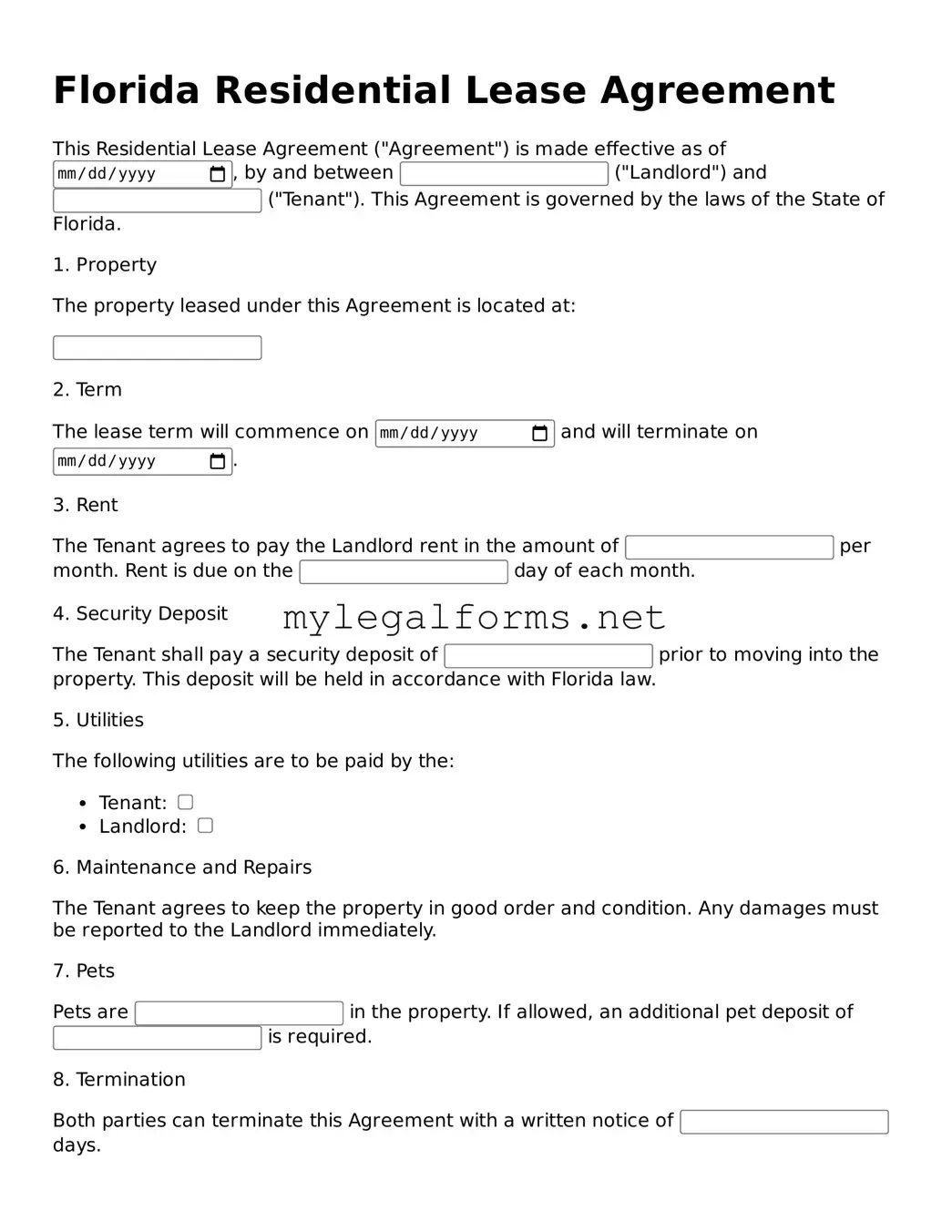Residential Lease Agreement Document for Florida State
The Florida Residential Lease Agreement is a legal document that outlines the terms and conditions between a landlord and tenant for renting a residential property in Florida. This form serves as a framework for the rental arrangement, detailing responsibilities, rights, and obligations of both parties. Understanding its components is essential for ensuring a smooth rental experience and protecting one's interests.
Launch Residential Lease Agreement Editor
